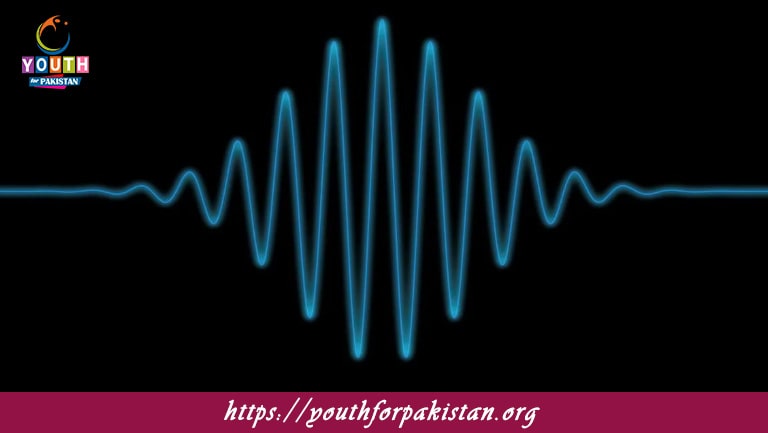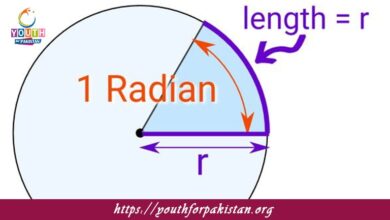Vibration MDCAT MCQs with Answers

Welcome to the Vibration MDCAT MCQs with Answers. In this post, we have shared Vibration Multiple Choice Questions and Answers for PMC MDCAT 2024. Each question in MDCAT Physics offers a chance to enhance your knowledge regarding Vibration MCQs in this MDCAT Online Test.
Vibration MDCAT MCQs Test Preparations
What is the term for the maximum displacement of a vibrating object from its equilibrium position?
A) Amplitude
B) Frequency
C) Wavelength
D) Period
The time taken for one complete cycle of a vibrating system is called the:
A) Frequency
B) Amplitude
C) Period
D) Wavelength
The number of oscillations per second is known as:
A) Frequency
B) Amplitude
C) Period
D) Speed
Which quantity is inversely proportional to the period of a vibrating object?
A) Frequency
B) Amplitude
C) Speed
D) Wavelength
The distance between two successive crests or troughs in a wave is called:
A) Amplitude
B) Period
C) Wavelength
D) Frequency
Which type of wave requires a medium to travel through?
A) Electromagnetic wave
B) Sound wave
C) Light wave
D) Radio wave
In which medium does sound travel the fastest?
A) Solid
B) Liquid
C) Gas
D) Vacuum
When a vibrating object moves in a regular and repeating motion, it is said to be in:
A) Simple harmonic motion
B) Uniform motion
C) Random motion
D) Accelerated motion
The restoring force in simple harmonic motion is proportional to:
A) Displacement
B) Velocity
C) Acceleration
D) Frequency
The formula for the frequency of a vibrating object is:
A) Frequency = 1 / Period
B) Frequency = Period × Speed
C) Frequency = Wavelength × Amplitude
D) Frequency = Speed / Wavelength
Which of the following is an example of transverse waves?
A) Sound waves
B) Water waves
C) Seismic waves
D) Radio waves
The unit of frequency is:
A) Hertz
B) Newton
C) Joule
D) Meter
The number of cycles of a vibrating system completed in one second is its:
A) Wavelength
B) Speed
C) Frequency
D) Period
The effect of damping on a vibrating system is to:
A) Increase the amplitude
B) Decrease the amplitude
C) Increase the frequency
D) Decrease the frequency
Which of the following waves does not require a medium for propagation?
A) Sound waves
B) Water waves
C) Light waves
D) Seismic waves
The principle of superposition is used to explain:
A) Constructive and destructive interference
B) Simple harmonic motion
C) Doppler effect
D) Resonance
What type of wave has particles vibrating perpendicular to the direction of wave travel?
A) Longitudinal wave
B) Transverse wave
C) Surface wave
D) Shock wave
Which phenomenon occurs when a vibrating object matches the natural frequency of another object?
A) Reflection
B) Refraction
C) Resonance
D) Diffraction
The frequency of a vibrating string is affected by:
A) Tension
B) Length
C) Mass
D) All of the above
In a pendulum, what factor primarily affects its period?
A) Mass of the pendulum
B) Length of the pendulum
C) Amplitude of swing
D) Temperature
Which of the following is not a characteristic of simple harmonic motion?
A) Restoring force proportional to displacement
B) Constant amplitude
C) Uniform acceleration
D) Oscillatory motion
The phase difference between two waves is:
A) The difference in their frequencies
B) The difference in their amplitudes
C) The difference in their wavelengths
D) The difference in their displacements at a given point
Which wave property is defined as the distance traveled by the wave in one period?
A) Amplitude
B) Frequency
C) Speed
D) Wavelength
In a vibrating system, the frequency of the forced vibrations depends on:
A) The natural frequency of the system
B) The amplitude of vibrations
C) The frequency of the external force
D) The phase of the external force
The energy of a vibrating system is primarily in the form of:
A) Kinetic energy
B) Potential energy
C) Thermal energy
D) Chemical energy
A standing wave is formed by:
A) Two waves traveling in the same direction
B) Two waves traveling in opposite directions
C) A single wave reflecting off a boundary
D) Multiple waves of different frequencies
The phenomenon of sound waves bending around obstacles is called:
A) Diffraction
B) Refraction
C) Reflection
D) Interference
The quality of a musical note is determined by its:
A) Frequency
B) Amplitude
C) Harmonics
D) Speed
The change in frequency of a wave due to the motion of the source is known as:
A) Doppler effect
B) Resonance
C) Interference
D) Diffraction
Which of the following is an example of a longitudinal wave?
A) Light wave
B) Water wave
C) Sound wave
D) Electromagnetic wave
The speed of a wave is calculated by:
A) Speed = Wavelength / Frequency
B) Speed = Frequency / Wavelength
C) Speed = Amplitude × Frequency
D) Speed = Wavelength × Amplitude
Which term describes the rate at which a vibrating object moves through its equilibrium position?
A) Amplitude
B) Frequency
C) Speed
D) Velocity
The point of maximum displacement on a transverse wave is called a:
A) Crest
B) Trough
C) Node
D) Antinode
In a vibrating string, which factor affects the pitch of the sound produced?
A) Tension
B) Length
C) Thickness
D) All of the above
The principle that explains why a swing moves back and forth is:
A) Conservation of energy
B) Simple harmonic motion
C) Newton’s first law
D) Coulomb’s law
What happens to the frequency of a wave if its wavelength is increased while the speed remains constant?
A) It increases
B) It decreases
C) It remains the same
D) It becomes zero
The motion of a pendulum is an example of:
A) Uniform circular motion
B) Simple harmonic motion
C) Rotational motion
D) Projectile motion
The effect of a medium on the speed of sound is primarily determined by:
A) Density
B) Temperature
C) Pressure
D) All of the above
Which of the following is not a characteristic of sound waves?
A) They can travel through a vacuum
B) They are longitudinal waves
C) They require a medium for propagation
D) They can be reflected and refracted
The phenomenon where the amplitude of vibration increases due to matching frequencies is known as:
A) Interference
B) Diffraction
C) Resonance
D) Reflection
If you are interested to enhance your knowledge regarding Physics, Chemistry, Computer, and Biology please click on the link of each category, you will be redirected to dedicated website for each category.




